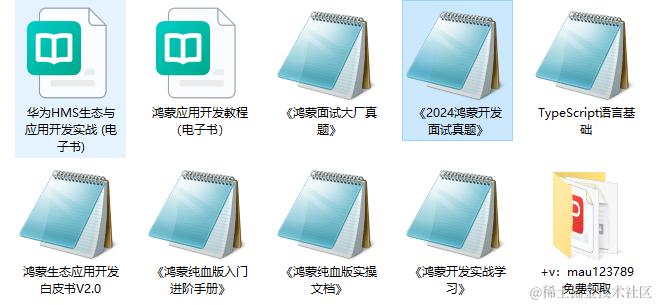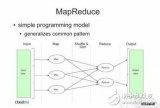在我们平时的工作中,充满了各种类型之间的转换。今天小编带大家上手 List 转 Map 的各种操作。
我们将假设 List 中的每个元素都有一个标识符,该标识符将在生成的 Map 中作为一个键使用。
定义一个类型
我们在转换之前,我们先暂定一个类来用于各种转换demo的演示。
public class Animal {
private int id;
private String name;
// 构造函数 、 get 、 set
}
我们假定 id 字段 是唯一的, 所以我们把 id 作为 Map 的key。
使用 Java 8 之前的方法
在使用Java 8 之前,就只能使用比较传统的for 循环来转换。
public Map< Integer, Animal > convertListBeforeJava8(List< Animal > list) {
Map< Integer, Animal > map = new HashMap< >();
for (Animal animal : list) {
map.put(animal.getId(), animal);
}
return map;
}
我们需要写一个测试代码,测试下是否正常运行了。
@Test
public void testConvertListBeforeJava8() {
Map< Integer, Animal > map = convertListService
.convertListBeforeJava8(list);
assertThat(
map.values(),
containsInAnyOrder(list.toArray()));
}
使用Java 8 stream
在Java 8 之后,我们可以通过新增的 Stream API 来进行转换操作
public Map< Integer, Animal > convertListAfterJava8(List< Animal > list) {
Map< Integer, Animal > map = list.stream()
.collect(Collectors.toMap(Animal::getId, Function.identity()));
return map;
}
测试代码
@Test
public void testConvertListAfterJava8() {
Map< Integer, Animal > map = convertListService.convertListAfterJava8(list);
assertThat(
map.values(),
containsInAnyOrder(list.toArray()));
}
使用Guava库
除了使用核心的Java API ,我们还能通过第三方库来实现这些操作。
使用Guava 库, 我们需要先引入依赖, 我们先在maven 中引入进来。
< !-- https://mvnrepository.com/artifact/com.google.guava/guava -- >
< dependency >
< groupId >com.google.guava< /groupId >
< artifactId >guava< /artifactId >
< version >31.0.1-jre< /version >
< /dependency >
接下来使用 Maps.uniqueIndex() 进行转换
public Map< Integer, Animal > convertListWithGuava(List< Animal > list) {
Map< Integer, Animal > map = Maps
.uniqueIndex(list, Animal::getId);
return map;
}
测试代码
@Test
public void testConvertListWithGuava() {
Map< Integer, Animal > map = convertListService
.convertListWithGuava(list);
assertThat(
map.values(),
containsInAnyOrder(list.toArray()));
}
使用 Apache Commons 库
除了 Guava ,我们还可以使用常用的 Apache Commons 库来进行转换。
我们现在Maven 中引入 commons 的依赖库
< !-- https://mvnrepository.com/artifact/org.apache.commons/commons-collections4 -- >
< dependency >
< groupId >org.apache.commons< /groupId >
< artifactId >commons-collections4< /artifactId >
< version >4.4< /version >
< /dependency >
接下来我们使用 MapUtils.populateMap() 方法进行转换。
public Map< Integer, Animal > convertListWithApacheCommons2(List< Animal > list) {
Map< Integer, Animal > map = new HashMap< >();
MapUtils.populateMap(map, list, Animal::getId);
return map;
}
测试代码
@Test
public void testConvertListWithApacheCommons2() {
Map< Integer, Animal > map = convertListService
.convertListWithApacheCommons2(list);
assertThat(
map.values(),
containsInAnyOrder(list.toArray()));
}
Map Key 的冲突问题
由于List中可以存在多个相同的实例, 但是map却不行, 那我们来看看Map要怎么处理呢?
首先,我们初始化一个有重复对象的 List
@Before
public void init() {
this.duplicatedIdList = new ArrayList< >();
Animal cat = new Animal(1, "Cat");
duplicatedIdList.add(cat);
Animal dog = new Animal(2, "Dog");
duplicatedIdList.add(dog);
Animal pig = new Animal(3, "Pig");
duplicatedIdList.add(pig);
Animal cow = new Animal(4, "牛");
duplicatedIdList.add(cow);
Animal goat= new Animal(4, "羊");
duplicatedIdList.add(goat);
}
从代码中可以看到, 牛 和 羊 对象的id 都是 4 。
Apache Commons 和 Java 8 之前的代码是一样的,相同id的Map 在put 的时候会进行覆盖。
@Test
public void testConvertBeforeJava8() {
Map< Integer, Animal > map = convertListService
.convertListBeforeJava8(duplicatedIdList);
assertThat(map.values(), hasSize(4));
assertThat(map.values(), hasItem(duplicatedIdList.get(4)));
}
@Test
public void testConvertWithApacheCommons() {
Map< Integer, Animal > map = convertListService
.convertListWithApacheCommons(duplicatedIdList);
assertThat(map.values(), hasSize(4));
assertThat(map.values(), hasItem(duplicatedIdList.get(4)));
}
而 Java 8 的 Collectors.toMap() 和 Guava 的 MapUtils.populateMap() 分别抛出 IllegalStateException 和 IllegalArgumentException。
@Test(expected = IllegalStateException.class)
public void testGivenADupIdListConvertAfterJava8() {
convertListService.convertListAfterJava8(duplicatedIdList);
}
@Test(expected = IllegalArgumentException.class)
public void testGivenADupIdListConvertWithGuava() {
convertListService.convertListWithGuava(duplicatedIdList);
}
总结
在这篇文章中,指北君给大家分享了各种List 转 Map 的方法, 给出了使用 Java 原生API 以及一些流行的第三方库的例子。
-
函数
+关注
关注
3文章
4350浏览量
63117 -
代码
+关注
关注
30文章
4846浏览量
69279 -
MAP
+关注
关注
0文章
49浏览量
15194
发布评论请先 登录
相关推荐
OpenHarmony语言基础类库【@ohos.util.List (线性容器List)】

add_ready_list_end
labview中 list 列表实时读取问题
是否有指示MAP的方法
Map Service Engine Based On We
Allego中find by list使用方法
基于MAP+CMLLR的说话人识别中发声力度问题

mapreduce 中MAP进程的数量怎么控制?

mapreduce设置map个数_mapreduce设置map内存

Python基础变量类型—List分析
什么是 map?
什么是list?
Java8的Stream流 map() 方法





 List 转 Map的方法
List 转 Map的方法











评论